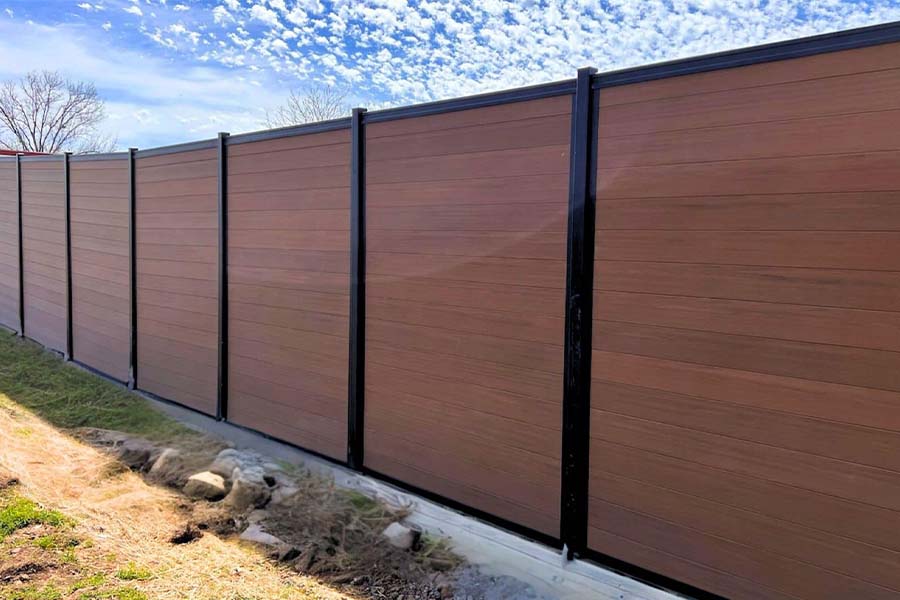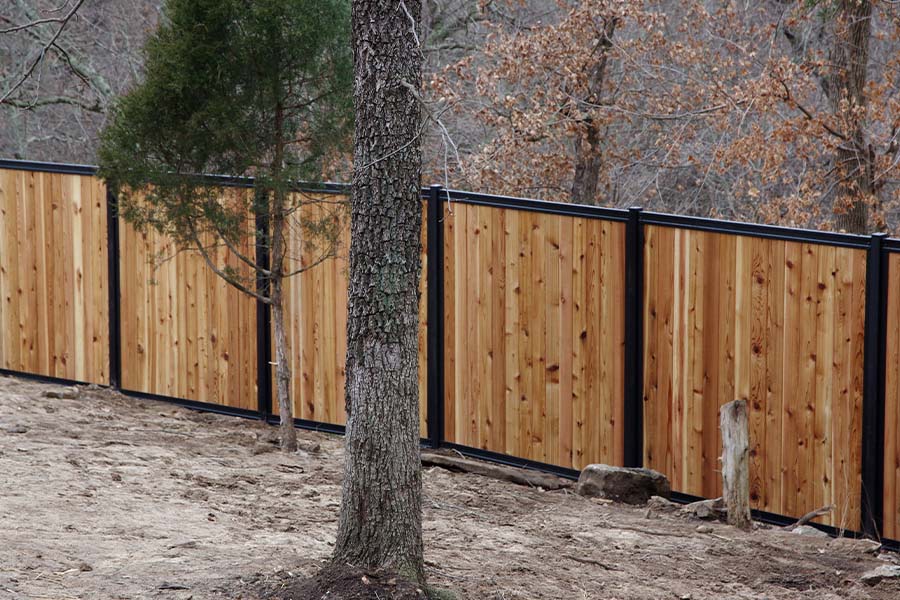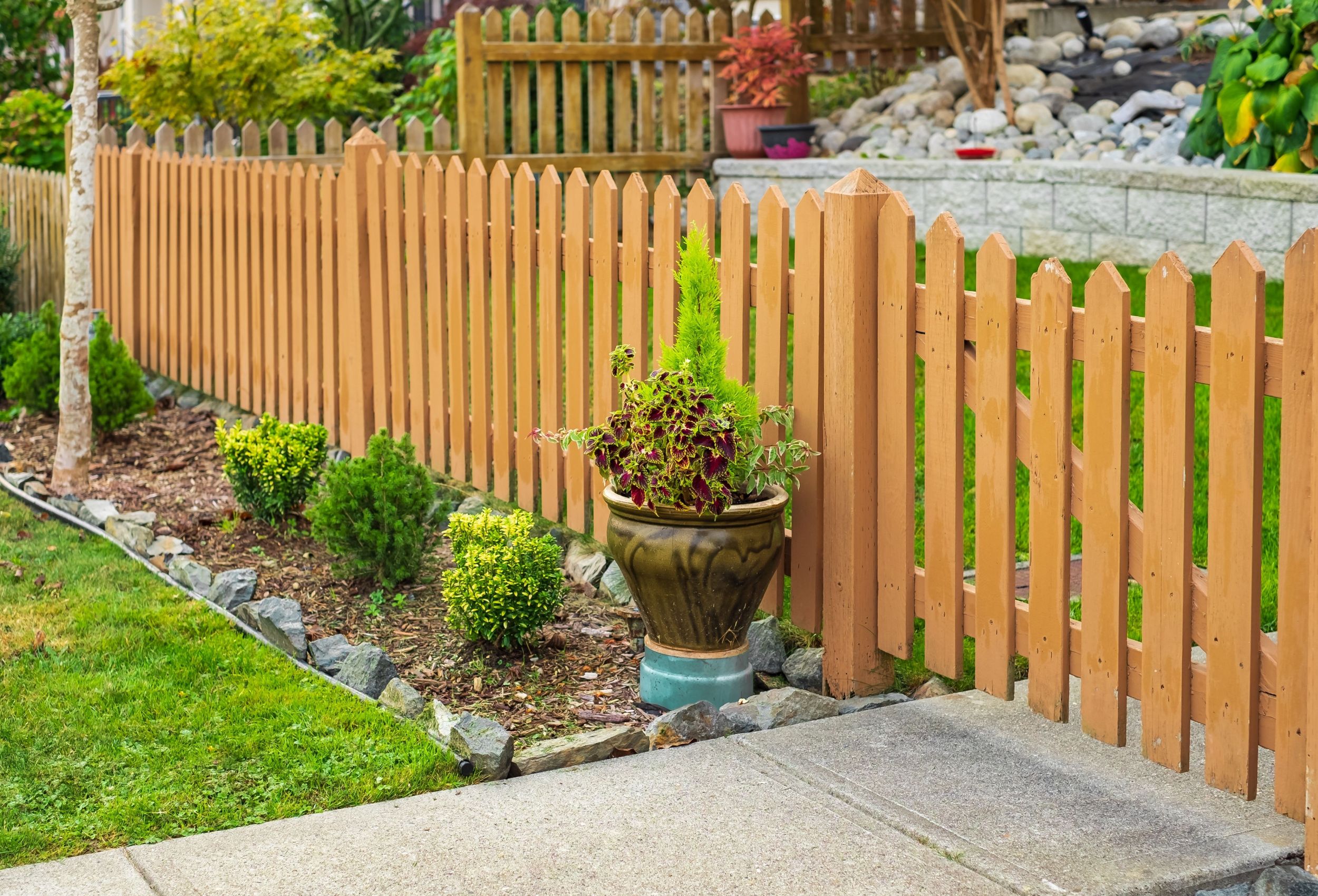All Categories
Featured
When it concerns preserving a wooden fencing, property owners commonly deal with the decision of whether to tarnish or repaint. Both alternatives have their disadvantages and pros, and the choice eventually depends on your aesthetic preferences, the kind of timber, and exactly how much maintenance you agree to dedicate to. Below's a thorough comparison to help you make an informed decision.
The Essentials of Painting and Staining
Paint involves covering the timber with an opaque layer of shade. It offers total protection, concealing the wood grain while providing excellent defense versus ecological elements.
Staining penetrates the timber, enhancing its natural charm while adding a protective layer. Depending on the kind, discolorations can vary from transparent to solid, allowing varying degrees of wood grain visibility.
Advantages And Disadvantages of Paint
Pros:
Wide Variety of Color styles: Paint offers unlimited color alternatives, allowing you to match your fence to your home's outside or personal design.
Longer Lasting: Top quality exterior paint can last up to 5-7 years, calling for much less regular reapplication.
Superior Protection: Repaint forms a thick, strong barrier versus moisture, UV rays, and pests.
Cons:
Cracking and peeling off: Gradually, paint can fracture or peel, particularly in areas with extreme climate condition.
Hides Natural Wood Charm: If you love the all-natural grain of timber, paint might not be the very best option.
Higher Upkeep: Repainting requires removing the old paint, which can be labor-intensive.
![]()
Benefits And Drawbacks of Staining
Pros:
All-natural Look: Discolorations protect and boost the natural charm of the wood, making it suitable for top notch hardwood like cedar or redwood.
Less Complicated to Reapply: Unlike paint, stains do not fracture or peel off. Reapplying discolor generally needs much less surface area prep work.
Adaptable Finish Alternatives: Spots can be found in clear, semi-transparent, and strong ranges, providing different degrees of coverage.
Cons:
![]()
Much Shorter Life-span: Spots, especially transparent and semi-transparent ones, might need reapplication every 2-3 years.
Limited Color Alternatives: While spots supply natural tones, they do not have the broad color palette offered with paint.
Much Less Protective: Discolorations permeate the timber yet don't supply as thick a barrier as paint, making them somewhat much less protective against extreme weather.
Factors to Consider
Visual Preferences: If you desire vivid colors and full insurance coverage, paint is the means to go. For a all-natural and rustic appearance, choose for tarnish.
Timber Kind: Premium timbers with beautiful grains gain from staining, while lower-grade woods can be repainted for a sleek appearance.
![]()
Environment: In damp or moist climates, paint's thicker barrier may provide much better protection. In modest or dry climates, stains can suffice.
Upkeep Commitment: Paint includes less frequent reapplication but more effort throughout touch-ups. Discoloration calls for regular upkeep however is much easier to handle.
Last Ideas
Both paint and staining can successfully secure and enhance your wooden fencing. The best option depends upon your priorities, whether they lean towards aesthetic appeals, durability, or ease of upkeep. By understanding the benefits and downsides of each, you can choose the surface that aligns with your demands and guarantees your fence remains a standout attribute of your residential property for years to find.
The Essentials of Painting and Staining
Paint involves covering the timber with an opaque layer of shade. It offers total protection, concealing the wood grain while providing excellent defense versus ecological elements.
Staining penetrates the timber, enhancing its natural charm while adding a protective layer. Depending on the kind, discolorations can vary from transparent to solid, allowing varying degrees of wood grain visibility.
Advantages And Disadvantages of Paint
Pros:
Wide Variety of Color styles: Paint offers unlimited color alternatives, allowing you to match your fence to your home's outside or personal design.
Longer Lasting: Top quality exterior paint can last up to 5-7 years, calling for much less regular reapplication.
Superior Protection: Repaint forms a thick, strong barrier versus moisture, UV rays, and pests.
Cons:
Cracking and peeling off: Gradually, paint can fracture or peel, particularly in areas with extreme climate condition.
Hides Natural Wood Charm: If you love the all-natural grain of timber, paint might not be the very best option.
Higher Upkeep: Repainting requires removing the old paint, which can be labor-intensive.

Benefits And Drawbacks of Staining
Pros:
All-natural Look: Discolorations protect and boost the natural charm of the wood, making it suitable for top notch hardwood like cedar or redwood.
Less Complicated to Reapply: Unlike paint, stains do not fracture or peel off. Reapplying discolor generally needs much less surface area prep work.
Adaptable Finish Alternatives: Spots can be found in clear, semi-transparent, and strong ranges, providing different degrees of coverage.
Cons:

Much Shorter Life-span: Spots, especially transparent and semi-transparent ones, might need reapplication every 2-3 years.
Limited Color Alternatives: While spots supply natural tones, they do not have the broad color palette offered with paint.
Much Less Protective: Discolorations permeate the timber yet don't supply as thick a barrier as paint, making them somewhat much less protective against extreme weather.
Factors to Consider
Visual Preferences: If you desire vivid colors and full insurance coverage, paint is the means to go. For a all-natural and rustic appearance, choose for tarnish.
Timber Kind: Premium timbers with beautiful grains gain from staining, while lower-grade woods can be repainted for a sleek appearance.

Environment: In damp or moist climates, paint's thicker barrier may provide much better protection. In modest or dry climates, stains can suffice.
Upkeep Commitment: Paint includes less frequent reapplication but more effort throughout touch-ups. Discoloration calls for regular upkeep however is much easier to handle.
Last Ideas
Both paint and staining can successfully secure and enhance your wooden fencing. The best option depends upon your priorities, whether they lean towards aesthetic appeals, durability, or ease of upkeep. By understanding the benefits and downsides of each, you can choose the surface that aligns with your demands and guarantees your fence remains a standout attribute of your residential property for years to find.
Latest Posts
Smooth Floor Covering Setup-- The Carpet Interiors Floor & Home Means
Published Apr 20, 25
2 min read
Your Neighborhood Floor Covering Experts in Orland Park, IL
Published Apr 20, 25
1 min read
Optimize Your Cost Savings Prospective with WyHy MAX Money Market
Published Apr 20, 25
1 min read
More
Latest Posts
Smooth Floor Covering Setup-- The Carpet Interiors Floor & Home Means
Published Apr 20, 25
2 min read
Your Neighborhood Floor Covering Experts in Orland Park, IL
Published Apr 20, 25
1 min read
Optimize Your Cost Savings Prospective with WyHy MAX Money Market
Published Apr 20, 25
1 min read